Worcester, Massachusetts, Hgh State Clinic, Hgh Injections, Hrt Doctors
Worcester, Massachusetts Blood Testing Facilities
 Represents a LabCorp blood testing facility
Represents a LabCorp blood testing facility Represents a Quest Diagnostics blood testing facility
Represents a Quest Diagnostics blood testing facility
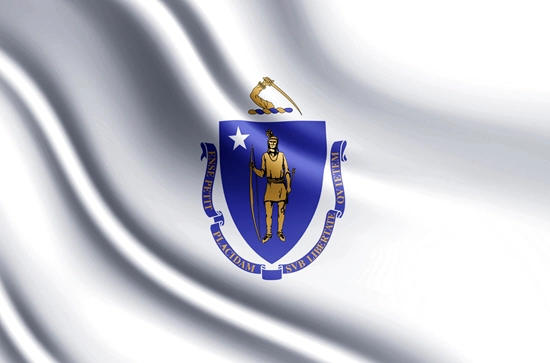
Nearby Labcorp Blood Testing facilities:
- Labcorp Center Distance: 0 m, 21 Eastern Avenue Suite G2, Worcester, Worcester County, MA, 1605
- Labcorp Center Distance: 2 m, 140 W Boylston Dr, Worcester, Worcester County, MA, 1606
- Labcorp Center Distance: 12 m, 72 Cudworth Rd, Webster, Worcester County, MA, 1570
- Labcorp Center Distance: 30 m, 6 Lexington St 2Nd Floor, Waltham, Middlesex County, MA, 2452
- Labcorp Center Distance: 31 m, 1400 Centre St Ste 208 2Nd Fl, Newton Center, Middlesex County, MA, 2459
- Labcorp Center Distance: 37 m, 756 Eddy St Suite 101, Providence, Providence County, RI, 2903
- Labcorp Center Distance: 38 m, 966 Park St Unit B7, Stoughton, Norfolk County, MA, 2072
- Labcorp Center Distance: 45 m, 25 Pelham Rd Ste 103A, Salem, Rockingham County, NH, 3079
- Labcorp Center Distance: 46 m, 49 Range Rd Ste 101, Windham, Rockingham County, NH, 3087
- Labcorp Center Distance: 48 m, 380 Merrimack St Ste B2, Methuen, Essex County, MA, 1844
- Labcorp Center Distance: 51 m, 12 Case St Ste 302, Norwich, New London County, CT, 6360
- Labcorp Center Distance: 60 m, 2284 Berlin Turnpike, Newington, Hartford County, CT, 6111
- Labcorp Center Distance: 67 m, 19 Hampton Rd Ste 13, Exeter, Rockingham County, NH, 3833
- Labcorp Center Distance: 75 m, 875 Greenland Rd Orchard Park, Portsmouth, Other, NH, 3801
- Labcorp Center Distance: 76 m, 230 Lafayette Rd Bldg D, Portsmouth, Rockingham County, NH, 3801
- Labcorp Center Distance: 80 m, 750 Central Ave Ste E, Dover, Strafford County, NH, 3820
- Labcorp Center Distance: 82 m, 21 Clark Way, Somersworth, Strafford County, NH, 3878
- Labcorp Center Distance: 83 m, 40 Winter St Ste 200, Rochester, Strafford County, NH, 3867
- Labcorp Center Distance: 90 m, 755 Campbell Ave Ste 3, West Haven, New Haven County, CT, 6516
- Labcorp Center Distance: 96 m, 1301 River St Rm 103, Valatie, Columbia County, NY, 12184
- Labcorp Center Distance: 97 m, 2500 Pondview Suite 102, Castleton On Hudson, Rensselaer County, NY, 12033
Nearby Quest Blood Testing facilities:
- Quest Center Distance: 0 m, 100 Mlk, Jr. Blvd, Worcester, US, MA, 01608-1220
- Quest Center Distance: 19 m, 79 Erdman Way, Leominster, Worcester County, MA, 01453-0000
- Quest Center Distance: 31 m, 335 Morse St, 1St Floor, Norwood, US, MA, 02062-5034
- Quest Center Distance: 32 m, 10 Commercial St, Foxboro, Norfolk County, MA, 02035-2509
- Quest Center Distance: 34 m, 22 Mill Street, Suite 107, Arlington, US, MA, 02476-4738
- Quest Center Distance: 35 m, 1 Randall Sq, Providence, Providence County, RI, 02904-2709
- Quest Center Distance: 36 m, 319 Longwood Ave, Boston, Suffolk County, MA, 02115-5728
- Quest Center Distance: 37 m, 700 Rogers Street, Lowell, Middlesex County, MA, 01854-3571
- Quest Center Distance: 38 m, 300 Main St, Nashua, Hillsborough County, NH, 03060-4635
- Quest Center Distance: 39 m, 340 Wood Rd, Suite 302, Braintree, US, MA, 02184-2410
- Quest Center Distance: 40 m, 500 Congress St Ste 1E, Quincy, Norfolk County, MA, 02169-0908
- Quest Center Distance: 41 m, 135D Storrs Rd, Mansfield Center, Tolland County, CT, 06250-1638
- Quest Center Distance: 43 m, 210 Quincy Ave, Brockton, Plymouth County, MA, 02302-2864
- Quest Center Distance: 44 m, 138 Haverhill St, Andover, Essex County, MA, 01810-1509
- Quest Center Distance: 45 m, 520 Hartford Turnpike, Vernon, Tolland County, CT, 06066-0000
- Quest Center Distance: 48 m, 180-182 Endicott Street, Danvers, Essex County, MA, 01923-0000
- Quest Center Distance: 49 m, 223 Chief Justice Cushing Hwy, Cohasset, Norfolk County, MA, 02025-1391
- Quest Center Distance: 50 m, 160 South River Road, Bedford, Hillsborough County, NH, 03110-5956
- Quest Center Distance: 51 m, 55 Town Street, Norwich, New London County, CT, 06360-2332
- Quest Center Distance: 52 m, 62 Brown Street, Haverhill, Essex County, MA, 01830-6790
- Quest Center Distance: 53 m, 195 Mcgregor Street, Manchester, Hillsborough County, NH, 03102-3748
- Quest Center Distance: 55 m, 131 New London Turnpike, Glastonbury, Hartford County, CT, 06033-2246
- Quest Center Distance: 56 m, 100 Retreat Ave, Hartford, Hartford County, CT, 06106-2528
- Quest Center Distance: 57 m, 21 Woodland St, Hartford, Hartford County, CT, 06105-4318
- Quest Center Distance: 58 m, 465 Silas Deane Highway, Wethersfield, Hartford County, CT, 06109-2134
- Quest Center Distance: 60 m, 237 State Rd, North Dartmouth, Bristol County, MA, 02747-2612
- Quest Center Distance: 62 m, 57 Long Pond Rd, Plymouth, Plymouth County, MA, 02360-2670
- Quest Center Distance: 64 m, 721 Bank Street, New London, New London County, CT, 06320-5005
- Quest Center Distance: 65 m, 106 Main Street, Wareham, Plymouth County, MA, 02571-2122
- Quest Center Distance: 69 m, 935 Farmington Avenue, Bristol, Hartford County, CT, 06010-3927
- Quest Center Distance: 70 m, 816 Broad Street, Ste 22, Meriden, US, CT, 06450-4364
- Quest Center Distance: 71 m, 1933 E Main St, Torrington, Litchfield County, CT, 06790-3102
- Quest Center Distance: 72 m, 665 Boston Post Road, Old Saybrook, Middlesex County, CT, 06475-1521
- Quest Center Distance: 75 m, 200 Griffin Rd Unit 12, Portsmouth, Rockingham County, NH, 03801-7114
- Quest Center Distance: 76 m, 15 South Elm Street, Wallingford, New Haven County, CT, 06492-4741
- Quest Center Distance: 77 m, 350 Gifford St Ste 15-17, Falmouth, Barnstable County, MA, 02540-2918
- Quest Center Distance: 78 m, 11 Woodland Road, Madison, New Haven County, CT, 06443-2342
- Quest Center Distance: 80 m, 60 Westwood Avenue, Waterbury, New Haven County, CT, 06708-2460
- Quest Center Distance: 82 m, 3000 Dixwell Ave, Hamden, New Haven County, CT, 06518-3522
- Quest Center Distance: 85 m, 144 North Main Street, Branford, New Haven County, CT, 06405-3044
- Quest Center Distance: 87 m, 60 Temple Street, New Haven, New Haven County, CT, 06510-2716
- Quest Center Distance: 88 m, 69 Camp Street, Hyannis, Barnstable County, MA, 02601-0000
- Quest Center Distance: 89 m, 14 Country Club Rd, Gilford, Belknap County, NH, 03249-6907
- Quest Center Distance: 90 m, 923 Main Street Route 6A, Yarmouth Port, Barnstable County, MA, 02675-5100
- Quest Center Distance: 95 m, 515 Bridgeport Ave, Shelton, Fairfield County, CT, 06484-5366
- Quest Center Distance: 96 m, 253 Pleasant Lake Ave, W. Harwich, Barnstable County, MA, 02645-2535
- Quest Center Distance: 98 m, 229 Cranberry Hwy, Orleans, Barnstable County, MA, 02653-3272
- Quest Center Distance: 99 m, 1421 Orleans Rd, Route 39 Ste S102, E. Harwich, US, MA, 02645-2149
Massachusetts Hormone Replacement Therapy Solutions
The Conscious Evolution Institute is Massachusetts' best source for twenty-first century Hormone Optimization and Restoration. We serve every corner of Massachusetts, and we can even meet you at your home or business in order to perform the evaluation necessary to make an informed diagnosis on your behalf.
With our assistance, we can help you mitigate or overcome the pitfalls of hormone imbalance, improving your health and wellness and increasing the odds that you live a longer and happier life.
Massachusetts HGH Therapy
One of the premier services that we offer at the Conscious Evolution Institute is Bio-Identical Human Growth Hormone Replacement Therapy. HGH is one of the most important and vital hormones that the body produces when it comes to maintaining optimal health and function.
Growth Hormone controls cellular metabolism, enhancing the efficiency of cellular processes throughout the body. As we grow older, our HGH Levels decline and our bodies slowly lose the capacity to sustain the rehabilitative processes which keep us functioning at peak capacity, which leads to symptoms of premature aging and a litany of symptoms that diminish our physical and psychological well-being.
HGH Injections are designed to restore HGH concentrations to more youthful levels, keeping the body functioning more efficiently, and these services are available to men and women over the age of thirty with clinically diagnosed HGH Deficiency.
Massachusetts Sermorelin Injections
If you're interested in what HGH Injections can do for you, but want to maximize the value of your dollar, Sermorelin Acetate Therapy is a slightly cheaper form of therapy which provides similar benefits as Human Growth Hormone Replacement Therapy. Recombinant Sermorelin Therapy restores HGH Levels in the body by supplementing the production of Growth Hormone-Releasing Hormone by the Hypothalamus. Give us a call and ask us about which form of treatment may be best for you!
Massachusetts Testosterone Replacement Therapy
Erectile Dysfunction can be one of the most embarrassing medical conditions that a man has to deal with, but did you know that ED can actually be a symptom of more severe, underlying health issues? Low-T not only impacts sexual health, but it can severely diminish your health and vitality as well.
Symptoms of Age-Related Testosterone Deficiency include increased weight gain, loss of muscle mass, anxiety, and atherosclerosis, and if you allow these symptoms to persist, you could be shaving years off your own life. Bio-Identical Testosterone HRT can restore optimal Testosterone Levels and help enhance your health and quality of life.
Massachusetts HCG Injections for Weight Loss
The Conscious Evolution Institute also offers weight loss solutions, most notably the HCG Diet. The HCG Diet is a combination of Recombinant Hormone Injections and Caloric Restriction which has been clinically shown to rapidly encourage weight loss while softening the side-effects of dieting which make diets so often fail.
With HCG Diets, you can lose 5-7 pounds per week without experiencing any significant road bumps along the way. HCG reduces sensations of hunger and optimizes fat burning, helping you burn calories from the most troublesome areas of the body. With a simple call to our clinic, we can help melt the pounds away!
Major Cities in Massachusetts
Boston
Boston, Massachusetts is the largest city in the state of Massachusetts, as well as the largest city in all of New England. Boston is famous for being one of the most highly educated major cities in the United States, and is home to a large number of Universities, including Northeastern University, Boston University, and Boston College.
Boston has a number of prestigious professional sports teams, including the Boston Red Socks, the Boston Celtics, and the New England Patriots. The most famous athletic event held annually in Boston is the Boston Marathon, where thousands from all over the world run each and every year.
Worchester
Worchester, Massachusetts is located in the central portion of the state, in Worchester County, and is the second largest city in the state. One interesting piece of trivia about the city is that it has a number of Victorian mills. Worchester is often referred to by the nickname, The Heart of the Commonwealth. The symbol of the city is a heart.
Worchester has one of the best medical schools in the United States, The University of Massachusetts Medical School. The largest employer in the city is UMass Memorial Health Care, followed by the medical school, itself.
Springfield
Springfield is located in the southwestern portion of the state of Massachusetts, and is the third largest city by population, and the second largest metropolitan area. Springfield is one of New England's oldest cities, founded in 1636.
The city is often referred to as The City of Homes because of its numerous examples of Victorian Homes. Springfield is also known as the Hoop City, because it was the city where the sport of basketball was invented. The city is located in the heart of the Knowledge Corridor, a region with the highest concentration of liberal arts colleges in the United States.
Lowell
Lowell, Massachusetts is located in the northeastern corner of Massachusetts and is the fourth most populated city in the state. Lowell was first settled in 1653, and was historically one of the most important industrial cities in New England. Lowell is located along the meeting point of the Concord and Merrimack Rivers. Because of its historical importance as an industry town, Lowell has a number of protected landmarks, including the American Textile History Museum, the Boott Cotton Mills Museum, and the New England Quilt Museum.
Cambridge
Cambridge is the fifth most highly populated city in the state of Massachusetts, but arguably the most iconic city in the state after Boston. Cambridge is home to two of the most prestigious schools in the United States, as well as the world: The Massachusetts Institute of Technology and Harvard University.
The Cambridge economy revolves primarily around education and fields that feed off of the presence of education. There are a number of biomedical and pharmaceutical companies in the area, including Pfizer, Genzyme, and Vertex Pharmaceuticals.
All About Worcester, Massachusetts Geographic Area
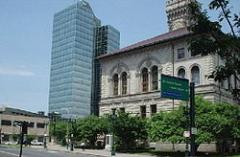
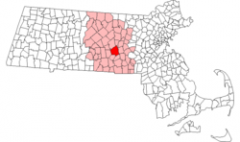
Worcester ( /ËnwÊostÉor/ WUUSS-tÉor) is a city and the county seat of Worcester County, Massachusetts, United States. Named after Worcester, England, as of the 2010 Census the city's population is 181,045, making it the second largest city in New England after Boston. Worcester is located approximately 40 miles (64 km) west of Boston, and 38 miles (61 km) east of Springfield. Due to its location in central Massachusetts, amidst Massachusetts' major metropolitan regions, Worcester is known as the "Heart of the Commonwealth," thus, a heart is the official symbol of the city.
/ËnwÊostÉor/ WUUSS-tÉor) is a city and the county seat of Worcester County, Massachusetts, United States. Named after Worcester, England, as of the 2010 Census the city's population is 181,045, making it the second largest city in New England after Boston. Worcester is located approximately 40 miles (64 km) west of Boston, and 38 miles (61 km) east of Springfield. Due to its location in central Massachusetts, amidst Massachusetts' major metropolitan regions, Worcester is known as the "Heart of the Commonwealth," thus, a heart is the official symbol of the city.
Worcester was considered its own region for centuries; however, with the encroachment of Boston's suburbs, it now marks the western periphery of the Boston-Worcester-Manchester (MA-RI-NH) U.S. Census Combined Statistical Area (CSA) (Greater Boston). The city features many examples of Victorian-era mill architecture.
The Pakachoag tribe of the Nipmuc nation of Native Americans were the indigenous settlers of the area. They called it Quinsigamond, meaning "fishing place for pickerel." Lake Quinsigamond provided fine hunting and fishing grounds a short distance from their main village near a spring on Pakachoag Hill in what is now Auburn. Mt. Wachusett was their sacred place.
Worcester was first settled by the English in 1673, along the Upper Boston Post Road. The modest settlement of six or seven houses was burned to the ground during King Philip's War on December 2, 1675, when settlers were either killed or driven off. The town was subsequently resettled and was incorporated in 1684. On September 10 of that year, Daniel Gookin and others petitioned to have the town's name officially changed from Quinsigamond to Worcester. However, its inhabitants were still vulnerable to attack, and some, such as Samuel Leonardson Jr., were taken hostage by natives during the 1690s. When Queen Anne's War started in 1702, the town was again abandoned by its English inhabitants except for Diggory Sargent. Sargent was later tomahawked, as was his wife, who was too weak to make the journey on foot to Canada. Their children were taken to Canada and survived.
In 1713, Worcester was resettled for the third time, permanently, by Jonas Rice (1673 ae1753). Jonas Rice held many offices and was selected as a judge in the Court of Common Pleas for Worcester County. His farm was located atop Union Hill and a commemorative Massachusetts Tercentenary historic marker stands as a reminder where Plantation St. and Massasoit Rd. intersect.
Named after the historic city of Worcester, England, Worcester was incorporated as a town on June 14, 1722 and chartered as a city on February 29, 1848. When the government of Worcester County was established on April 2, 1731, Worcester was chosen as shire town (later known as a county seat). From that date until the dissolution of the county government on July 1, 1998, it was the only county seat.
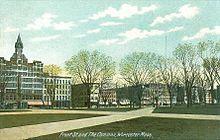
As political tensions rose in the months before the Revolution, Worcester served as a center of revolutionary activity. Because it was an important munitions depot, Worcester was targeted for attack by Loyalist general Thomas Gage. However, officers sent secretly to inspect the munitions depot were discovered by Patriot Timothy Bigelow. General Gage then decided to move on to the second munitions depot in Lexington. In 1775, determining that Boston was too dangerous, Isaiah Thomas moved his newspaper, the Massachusetts Spy, to Worcester. The Massachusetts Spy was one of the few papers published continuously during the Revolution. On July 14, 1776, Isaiah Thomas, intercepting the packet from Philadelphia to Boston, performed the first public reading of the Declaration of Independence ever in front of Worcester City Hall. In 1812, Thomas founded the American Antiquarian Society, a research library holding nearly two-thirds of the items known to have been printed in America from 1639 through 1820. The Society's holdings from 1821 to 1876 compare favorably with those of the Library of Congress and other major research libraries.
Known for innovation in commerce, industry, education, and social thought, Worcester and the nearby Blackstone Valley were major contributors to the American Industrial Revolution. Ichabod Washburn, an early industrialist, developed a process for extruding steel wire. His company, Washburn & Moen, founded in 1831, was "the company that 'barbed-wire fenced the American West, '" and held the battle lines during World War I. In 1840, Loring Coes invented the monkey wrench. In the 1850s, George Crompton and L.J. & F.B. Knowles founded companies that manufactured textile looms which drove the Industrial Revolution. Another Worcester innovator, physician Russel Howes, invented the first envelope folding machine in 1856. It could produce 25,000 envelopes in ten hours, using three operators.
Women found economic opportunity in Worcester. An early female entrepreneur, Esther Howland, designed and manufactured the first American valentine cards in 1847. Women also found opportunity in The Royal Worcester Corset Factory, a company that provided employment opportunity for 1200 women; it was the largest employer of women in the United States in 1908.

Several entrepreneurs brought growth to Worcester's economy during this period. John Jeppson, a skilled potter, emigrated from Hoganas, Sweden. He began working with Frank B. Norton at his stoneware manufacturing company located on the Blackstone Canal. He later bought out Norton and during the 20th Century, Norton Company was one of the largest industries and employers in Worcester. In 1988, Norton Company was acquired by Saint-Gobain, the world's largest manufacturer and supplier of performance engineered abrasives for technical manufacturing and commercial applications, in addition to general household and automotive refinishing. Jeppson created economic opportunity for the thousands of his countrymen who followed him to Worcester, and others. Many Irish immigrants settled in Worcester during this period, as well. They helped build the railroad and Blackstone Canal, further driving Worcester's economic engine.
An innovative form of affordable housing appeared in the 19th century: the three decker. Hundreds of these houses were built, affording capacious, comfortable apartments for a homeowner and two tenants. Many extended families settled in these houses, developing safe, stable neighborhoods for city factory workers. While considered passe by the 1960s, they have enjoyed renewed interest and attention due to the quality of - and attention paid to - the quality of construction and variety of design. Intricately carved doorjambs and moldings considered too expensive to produce today are common in these homes, as well as hardwood floors and built-in glass-doored china cabinets. Many homes in the Vernon Hill and Grafton Hill neighborhoods have been restored to their original appearance inside and out.
In December 1999, the Worcester Cold Storage Warehouse fire received national attention. Two homeless people, deemed mentally disabled, accidentally knocked over a lit candle in an abandoned cold storage warehouse, igniting a conflagration. Six firefighters lost their lives in an attempt to rescue the homeless people. This fire was one of the worst firefighting tragedies of the late 20th century. President Bill Clinton, Vice President Al Gore, and other local and national dignitaries attended services and a memorial program.
The first decade of the 21st century saw the closing and creation of major cultural institutions in the city. In April 2006, the Worcester Common Outlets, a 1,000,000-square-foot (93,000 m2) mall that occupies a large swath of downtown Worcester, was set to be demolished to make way for the long-planned "City Square," a multi-use collaboration of several downtown buildings for commercial, retail, and residential use. The Worcester Foothills Theatre, formerly located in the Outlets, "suspended operations" on May 10, 2009, due to lack of funding. It is unclear if it will ever reopen. In March 2008, the Hanover Theatre for the Performing Arts opened as a venue for touring Broadway-style shows.
Worcester is located at 42 °16 a²8 a³N 71 °48 a²14 a³W / 42.26889 °N 71.80389 °W / 42.26889; -71.80389 (42.268843, na71.803774)., close to the center of Massachusetts.
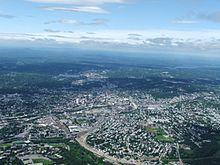
According to the United States Census Bureau, the city has a total area of 38.6 square miles (100 km2), of which 37.6 square miles (97 km2) are land and 1.0 square mile (2.6 km2) 2.59%) are water-covered. Worcester is bordered by the towns of Auburn, Grafton, Holden, Leicester, Millbury, Paxton, Shrewsbury, and West Boylston. These towns serve as some of the bedroom communities and suburbs of the greater Worcester area.
The Blackstone River passes through Worcester. Its headwaters are found in Institute Park. The river courses underground through the center of the city, and emerges at the foot of College Hill, flowing through Quinsigamond Village and into Millbury. Water Street, originally the Blackstone Canal, is emerging as the center of the "Canal District". Folklore has it that the city sits atop seven hills: Airport Hill, Bancroft Hill, Belmont Hill (Bell Hill), Grafton Hill, Green Hill, Pakachoag Hill and Vernon Hill. Actually, there are more than seven hills. Others include Indian Hill, Newton Hill, Poet's Hill, and Wigwam Hill, among others. Worcester's lakes include Lake Quinsigamond, the site of rowing competitions, Indian Lake, Bell Pond, and Coes Pond.
Worcester counts within its borders over 1,200 acres (4.9 km2) of publicly owned property. Elm Park, purchased in 1854 and laid out by Frederick Law Olmsted, was not only the first public park in the city (after the 8-acre (32,000 m ²) City Common from 1669) but also one of the first public parks in the U.S. Both the City Common and Elm Park are listed in the National Register of Historic Places. In 1903 the Green family donated 549 acres (2.22 km2) of Green Hill area land to the city, making Green Hill Park the largest in the city. Green Hill Park Shelter, built in 1910, is on the National Register of Historic Places. In June 2002, city and state leaders dedicated the Massachusetts Vietnam Veterans Memorial on the Green Hill Park grounds. Other parks include: Newton Hill, East Park, Morgan Park, Shore Park, Crompton Park, Hadwen Park, and University Park.
Worcester's continental climate is typical of the New England region. The weather changes rapidly owing to the confluence of warm, humid air from the southwest; cool, dry air from the north; and the moderating influence of the Atlantic Ocean to the east. Summers are typically warm and humid, while winters are cold, windy, and snowy. New Englanders expect snow as early as October (rarely), and as late as May. The USDA classifies the city as hardiness zone 5.
The hottest month is July, with a 24-hour average of 70.1 °F (21.2 °C), while the coldest is January, at 23.6 °F ( na4.7 °C). Periods exceeding 90 °F (32 °C) in summer and below 10 °F ( na12 °C) in winter are not uncommon, but rarely prolonged. The all-time record high temperature is 102 °F (39 °C), recorded on July 4, 1911. The all-time record low temperature is na24 °F ( na31 °C), recorded on February 16, 1943.
The city averages 49.1 inches (1,250 mm) of precipitation a year, as well as an average of 67.2 inches (171 cm) of snowfall a season, receiving far more snow than coastal locations less than 40 miles (64 km) away. Massachusetts' geographic location, jutting out into the North Atlantic, also makes the city very prone to Nor'easter weather systems that can dump more than 50 inches (130 cm) of snow on the region in one storm event.
While rare, the city has had its share of extreme weather. On September 21, 1938, the city was hit by the brutal New England Hurricane of 1938. Fifteen years later, Worcester was hit by a tornado that killed 94 people. The deadliest tornado in New England history, it damaged a large part of the city and surrounding towns. It struck Assumption Preparatory School, now the site of Quinsigamond Community College.
Successive waves of immigrants have in the past formed coherent ethnic enclaves, some of which continue to contribute to the rich ethnic texture of Worcester today. Swedes settled in Quinsigamond Village and Greendale, Italians settled along Shrewsbury Street, Irish and Poles settled around Kelly Square, Lithuanians settled on Vernon Hill, and Jews built their first synagogues on Green Island and Union Hill. The African-American community has existed since colonial times. Since the late 19th century, Grafton Hill and Vernon Hill have been points of entry for immigrants from all over the world: Irish, Italians, Lithuanians, Poles, Syrians, Lebanese, Indians, Puerto Ricans, French Canadians, and more recently, Albanians and Brazilians. Other prominent groups include Russians, Armenians, Greeks, Vietnamese, Liberians, and Congolese.
According to the 2010 Census, Worcester had a population of 181,045, of which 88,150 (48.7%) were male and 92,895 (51.3%) were female. In terms of age, 77.9% were over 18 years old and 11.7% were over 65 years old; the median age is 33.4 years. The median age for males is 32.1 years and 34.7 years for females.
In terms of race and ethnicity, Worcester's population was 69.4% White, 11.6% Black or African American, 0.4% American Indian and Alaska Native, 6.1% Asian (3.0% Vietnamese, 0.9% Chinese, and 0.8% Asian Indian),
Worcester is governed by a Council-manager government with a popularly elected mayor. A city council acts as the legislative body, and the council-appointed manager handles the traditional day-to-day chief executive functions.
City councilors can run as either a representative of a city district or as an at-large candidate. The winning at-large candidate who receives the greatest number of votes for mayor becomes the mayor (at-large councilor candidates must ask to be removed from the ballot for mayor if they do not want to be listed on the mayoral ballot). As a result, voters must vote for their mayoral candidate twice, once as an at-large councilor, and once as the mayor. The mayor has no more authority than other city councilors, but is the ceremonial head of the city and chair of the city council and school committee. Currently, there are 11 councilors: 6 at-large and 5 district.
Worcester's first charter, which went into effect in 1848, established a Mayor/Bicameral form of government. Together, the two chambers ae the 11-member Board of Aldermen and the 30-member Common Council ae were vested with complete legislative powers. The mayor handled all administrative departments, though appointments to those departments had to be approved by the two-chamber City Council.
Seeking to replace the old, outdated charter, Worcester voters in November 1947 approved a change to Plan E municipal government. In effect from January 1949 until November 1985, this charter (as outlined in chapter 43 of the Massachusetts General Laws) established City Council/City Manager government. This type of governance, with modifications, has survived to the present day.
Initially, Plan E government in Worcester was organized as a 9-member council (all at-large), a ceremonial mayor elected from the council by the councilors, and a council-appointed city manager. The manager oversees the daily administration of the city, makes all appointments to city offices, and can be removed at any time by a majority vote of the Council. The mayor chairs the city council and the school committee, and does not have the power to veto any vote.
In 1983, Worcester voters again decided to change the city charter. This "Home Rule" charter (named for the method of adoption of the charter) is similar to Plan E, the major changes being to the structure of the council and the election of the mayor. The 9-member Council became 11, 6 at-large and 1 from each city district. The mayor is chosen by popular election, but must run as an at-large councilor.
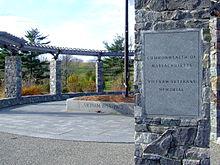
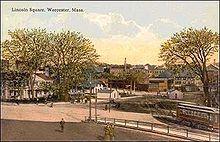
Worcester's history of social progressivism includes a number of temperance and abolitionist movements. It was also a leader in the women's suffrage movement: The first national convention advocating women's rights was held in Worcester, October 23 ae24, 1850.
Two of the nation aos most radical abolitionists, Abby Kelley Foster and her husband Stephen S. Foster, adopted Worcester as their home, as did Thomas Wentworth Higginson, the editor of The Atlantic Monthly and Emily Dickinson's avuncular correspondent, and Unitarian minister Rev. Edward Everett Hale.
The area was already home to Lucy Stone, Eli Thayer, and Samuel May, Jr. They were joined in their political activities by networks of related Quaker families such as the Earles and the Chases, whose organizing efforts were crucial to the anti-slavery cause in central Massachusetts and throughout New England.
Anarchist Emma Goldman and two others opened an ice cream shop in 1892. "It was spring and not yet warm," Goldman later wrote, "but the coffee I brewed, our sandwiches, and dainty dishes were beginning to be appreciated. Within a short time we were able to invest in a soda-water fountain and some lovely coloured dishes."
On October 19, 1924, the largest gathering of the Ku Klux Klan (KKK) ever held in New England took place at the Agricultural Fairgrounds in Worcester. Klansmen in sheets and hoods, new Knights awaiting a mass induction ceremony, and supporters swelled the crowd to 15,000. The KKK had hired more than 400 "husky guards," but when the rally ended around midnight, a riot broke out. Klansmen's cars were stoned and burned, and their windows smashed. KKK members were pulled from their cars and beaten. Klansmen called for police protection, but the situation raged out of control for most of the night. The violence after the "Klanvocation" had the desired effect: Membership fell off, and no further public Klan meetings were held in Worcester.
Robert Stoddard, owner of The Telegram and Gazette, was one of the founders of the John Birch Society.
Sixties radical Abbie Hoffman was born in Worcester in 1936 and spent more than half of his life there. Until he was 30, Worcester was the center of his universe; when he moved to New York in 1966, Worcester remained a haven. Even during his years as a fugitive, he would slip back into town and gather with old friends at his favorite restaurant, El Morocco. Biographer and friend Jonah Raskin explains that "Worcester provided him with his view of society and his way of dealing with the world."
The Worcester Fire Department's (WFD) 406 full-time, professional firefighters protect the city of Worcester 24/7, 365. The WFD operates out of 10 Fire Stations in 2 Divisions, located throughout the city. The WFD operates a fire apparatus fleet of 13 Engines, 7 Ladders, 1 Rescue, 1 Special Operations Unit, 1 State Haz-Mat. Unit, 1 State Field Communications Unit, 1 Scuba Dive Rescue Units, 1 Air Unit, 1 Fireboat, 2 District Chiefs, and 1 Deputy Chief. On the night of December 3, 1999, at 6:13 pm., occurred the Worcester Cold Storage Warehouse fire, in which 6 Worcester firefighters perished while looking for two homeless victims trapped in the blaze. The fire went to five alarms and took six days to bring under control. The six firefighters that lost their lives are known as the Worcester 6.
The WFD responded to a total of 28,891 incidents (1,384 fire and 27,507 non-fire) during 2011. In 2007, the fire department received a Class 2 rating from ISO.
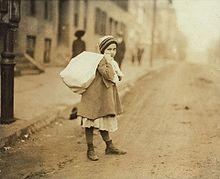
Historically, Worcester's economic roots were tied to the Blackstone River, and in the beginning to the Blackstone Canal, which connected Worcester to the port of Providence, Rhode Island. Textiles, shoes, and finished clothing were some of the first industries in the city. A second wave of manufacturing facilities soon came on the scene to further develop Worcester into a manufacturing center. Wire and machinery were the strengths of this economic cycle. One of the leaders of this manufacturing wave was George F. Fuller, an inventor and philanthropist, who developed a heat-treating process crucial to developing steel strong enough to be used in train couplings and the first automobile crankshafts. His company, Wyman-Gordon, has been a leading manufacturer of machine parts. Charles Palmer, another innovator, received the first patent (1891) for a lunch wagon, or diner. He built his "fancy night cafes" and "night lunch wagons" in the Worcester area until 1901. After building a lunch wagon for himself in 1888, Thomas Buckley decided to manufacture lunch wagons in Worcester. Buckley was very successful and became known for his "White House Cafe" wagons. In 1906 Philip Duprey and Irving Stoddard established the Worcester Lunch Car Company, which shipped 'diners' all over the Eastern Seaboard. Worcester's Boulevard Diner, Parkway Diner, and Miss Worcester Diner are all examples of Worcester Lunch Car Company units, with the Miss Worcester being located across the street from the former factory. Worcester's largest Department store was Denholm & McKay founded in 1871. The store closed in 1973.
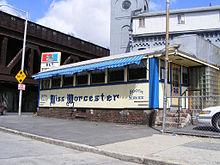
They were joined in early automobile manufacture by American Wheelock, which built compressed air-powered trucks at Worcester in 1904.
In the 1930s a local merchant, Anthony "Spag" Borgatti, opened Spag's, a small hardware business, in nearby Shrewsbury. Credited with the invention of discount marketing, he stored his wares in old trailer trucks in order to avoid paying taxes. He was a local philanthropist. Every spring, Spag offered free tomato seedlings to his customers.
The David Clark Company pioneered aeronautical protective equipment beginning in 1941, ranging from anti-gravity suits to space suits. Innovations include full-pressure suits for X-15 test pilots flying to record speeds and altitudes and the spacesuit worn by all Apollo astronauts on lunar missions. The company produces the suits worn by modern space shuttle astronauts.
Morgan Construction, a manufacturer of steel rolling mills, has its headquarters in Worcester. Wright Line, a manufacturer of consoles and other workstations for 911/emergency operations centers, server enclosures and racks for data centers, office and computer lab furniture, is also headquartered in the city. Saint-Gobain has a substantial presence in Worcester following its 1990 purchase of Norton Abrasives, a 100+ year old manufacturer of abrasives, ceramics, and specialty materials. Polar Beverages, the largest independent soft-drink bottler in the United States, is also located in the city.
Today, Worcester has a diversified economy. The biotech park adjacent to the University of Massachusetts Medical School is host to many innovative companies, including Advanced Cell Technology, which focuses on the development of effective methods to generate replacement cells from stem cells, and Abbott Laboratories, a leading pharmaceutical research and manufacturing firm.
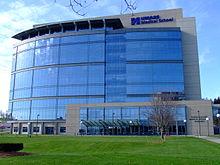
In the financial sector, Hanover Insurance maintains its national headquarters in the city. A subsidiary of Unum (formerly UnumProvident), the Paul Revere Life Insurance Company, is also headquartered in Worcester as is the Harleysville Worcester Insurance Company, the oldest insurance company based in Massachusetts.
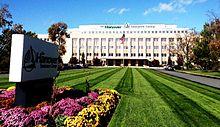
The Worcester Foundation for Experimental Biology located in nearby Shrewsbury is best known for the development of the oral contraceptive pill (1951) and for pioneering research on in vitro fertilization. The first American conceived by this method (1981), Elizabeth Jordan Carr, lived in nearby Westminster.
In the area of small business retailing, Worcester is home to the notable popular culture emporium That's Entertainment (est. 1980), which in 1997 was one of three comic book stores worldwide that received a "Will Eisner Spirit of Comics Retailer Award" from Comic-Con International: San Diego. The award, named for comic book creator Will Eisner, recognizes "an individual retailer who has done an outstanding job of supporting the comics art medium both in the community and within the industry at large".
The Worcester Common Outlets originally opened July 29, 1971 as the Worcester Center Galleria. In 1994, Worcester Center Associates sold the Galleria to New England Development which slowly shut down the remaining stores with plans to revitalize the mall. On October 29, 1994, the Galleria reopened as the Worcester Common Fashion Outlets. As business dwindled, Berkeley Investments, along with its capital partner, Starwood Capital of Greenwich, Connecticut announced that they would buy the Worcester Common Outlets on June 22, 2004. Store leases were not renewed and the mall closed for good in April 2006. The mall was vacant and had not been demolished until September 13, 2010, when demolition of portions of the former mall started. On May 18, 2011, visible exterior demolition began.
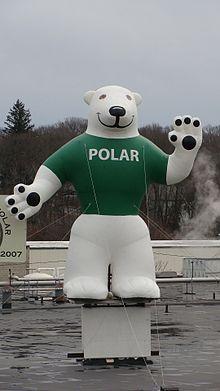
Polar Beverages, founded in 1882, is headquartered in Worcester. It runs two bottling plants in the city, where it bottles its own line of soft drinks as well as several major national brands.
In 2010, the median household income was $61,212. Median income for the family was $76,485. The per capita income was $29,316. About 7.7% of families and 10.8% of the population were below the poverty line, including 14.1% of those under age 18 and 7.5% of those age 65 or over.
According to the City's 2010 Comprehensive Annual Financial Report, the top ten employers in the city are:
Worcester's public schools educate more than 23,000 students in kindergarten through 12th grade. The system consists of 33 elementary schools, 4 middle schools, 7 high schools, and 13 other learning centers such as magnet schools, alternative schools, and special education schools. The city's public school system also administers an adult education component called "Night Life", and operates a Public-access television cable TV station on channel 11.
The Massachusetts Academy of Math and Science was founded in 1992 as a public secondary school located at the Worcester Polytechnic Institute.
Twenty-one private and parochial schools are also found throughout Worcester, including the city's oldest educational institution, Worcester Academy, founded in 1834, and Bancroft School, founded in 1900.
The most known public schools include North High School, South High School, Doherty High School, and Burncoat High School.
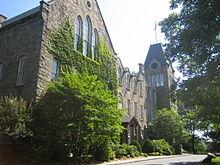
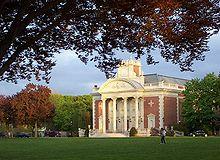
Worcester is home to several institutes of higher education.
An early higher education institution, the Oread Institute, closed in 1934.
Many of these institutions participate in the Colleges of Worcester Consortium. This independent, non-profit collegiate association includes academic institutions in Worcester and other communities in Worcester County, such as Anna Maria College in neighboring Paxton. It operates and facilitates cooperation among the colleges and universities. One example is its inter-college shuttle bus and student cross registration.
Worcester is the home of Dynamy, the oldest student residential internship program in the United States. The organization was founded in 1969 and provides internships to young adults during a Gap year, helping them mature, become self-sufficient, and choose a vocation.
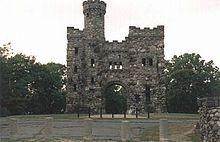
Worcester is home to several noteworthy libraries and museums, including:
Performing arts centers and arenas are abundant in the city. They include:
The Worcester County Poetry Association fosters the poetic tradition by sponsoring readings by national and local poets, celebrating Bloomsday, and holding conferences and literary tours of Worcester. Local poets have competed successfully in the National Poetry Slam.
The Worcester Center for Crafts, founded in 1856 as the Worcester Employment Society, provides professional-level craft studies to the Worcester community. The Craft Center's original purpose was to foster economic empowerment by teaching immigrants the skills needed to create and sell crafts. Today, the Worcester Center for Crafts offers craft education in weaving, metalwork, woodwork, enameling, jewelry-making, and other crafts, and seeks to promote an appreciation for fine craft.
In 1963, a WPI-based folk trio called the Wanderers recorded one album for Strand Records. This was done under the name Minute Men to avoid confusion with another existing recording group. The trio also recorded one single for Swan Records under the name College Boys.
Also in 1963, WPI-based rock band the Blue Echoes recorded a local hit single on their own Bristol label. This was picked up and released nationally by the Lawn subsidiary of Swan Records. The group later recorded two more singles on the local BEP label, one of which was a regional hit.
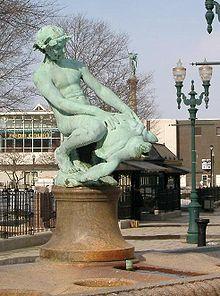
In September 1981, the Rolling Stones played an unscheduled performance at the nightclub Sir Morgan's Cove (later renamed The Lucky Dog) before embarking on their national tour that year. Billed as "Blue Monday with The Cockroaches", the Stones played before a packed house of 350 people who had been given tickets in a promotion by WAAF Radio that day.
One of Rammstein's performances in the Family Values Tour ended with lead singer Till Lindemann and keyboardist Christian "Flake" Lorenz being arrested due to the controversial performance of "Buck dich" during a concert on June 5, 1999, in Worcester. They were each fined $200 and spent the night in jail.
Wormtown, a nickname for Worcester, was coined by WCUW DJ Lenny Saarinen, about 1978. Saarinen joked that Wormtown would be a fitting name for Worcester as it was a dead town. Later he took on the moniker of LB Worm, the Mayor of Wormtown. At first, the term referred to the local underground punk rock subculture. Later it became used by a few to refer to the city itself.
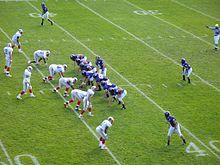
Worcester was home to Marshall Walter ("Major") Taylor, an African American cyclist who won the world one-mile (1.6 km) track cycling championship in 1899. Taylor aos legacy is being the second black world champion in any sport. Taylor was nicknamed the Worcester Whirlwind by the local papers.
Lake Quinsigamond is home to the Eastern Sprints, a premier rowing event in the United States. Competitive rowing teams first came to Lake Quinsigamond in 1857. Finding the long, narrow lake ideal for such crew meets, avid rowers established boating clubs on the lake's shores, the first being the Quinsigamond Boating Club. More boating clubs and races followed, and soon many colleges (local, national, and international) held regattas, such as the Eastern Sprints, on the lake. Beginning in 1895, local high schools held crew races on the lake. In 1952, the lake played host to the National Olympic rowing trials.
In 2002, the Jesse Burkett Little League all-stars team went all the way to the Little League World Series. They made it to the US final before losing to Owensboro, Kentucky. Jesse Burkett covers the West Side area of Worcester.
The city is home to the American Hockey League team Worcester Sharks, which plays at the DCU Center as a developmental team for the National Hockey League's San Jose Sharks. The AHL was formerly represented by the Worcester IceCats from 1994 to 2005. The IceCats were chiefly affiliated with the St. Louis Blues.
The city aos professional baseball team, the Worcester Tornadoes, started in 2005 and is a member of the Canadian-American Association of Professional Baseball League. The team plays at the Hanover Insurance Park at Fitton Field on the campus of the College of the Holy Cross and is not affiliated with any major league team. The New England Surge, a member of the Continental Indoor Football League, played their home games in the DCU Center in their two years of existence, 2007 and 2008. Candlepin bowling was invented in Worcester in 1880 by Justin White, an area bowling alley owner.
Golf's Ryder Cup's first official tournament was played at the Worcester Country Club in 1927. The course also hosted the U.S. Open in 1925, and the U.S. Women's Open in 1960.
Worcester aos colleges have long histories and many notable achievements in collegiate sports. The College of the Holy Cross represents NCAA Division 1 sports in Worcester. The other colleges and Universities in Worcester correspond with division II and III. The Holy Cross Crusaders won the NCAA men's basketball champions in 1947 and NIT men's basketball champions in 1954, led by future NBA hall-of-famers and Boston Celtic legends Bob Cousy and Tom Heinsohn. The Crusaders men aos
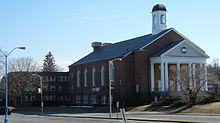
The Unitarian-Universalist Church of Worcester was founded in 1841. Worcester's Greek Orthodox Cathedral, St. Spyridon, was founded in 1924.
Worcester is home to a dedicated Jewish population, who attend six synagogues, including Reform congregations Temple Emanuel and Temple Sinai, and Congregation Beth Israel, a Conservative synagogue founded in 1924. The synagogue and its rabbi were the subject of the book And They Shall be My People: An American Rabbi and His Congregation by Paul Wilkes.
The Worcester Telegram & Gazette is Worcester's only daily newspaper. The paper, known locally as "the Telegram" or "the T and G," is wholly owned by The New York Times Company. WCTR, channel 3, is Worcester's local news television station, and WUNI-TV, channel 27, is the only major over-the-air broadcast television station in Worcester. Radio stations based in Worcester include WCHC, WCUW, WSRS, WTAG, WWFX, WICN and WXLO. WCCA-TV Channel 13 provides Community Cable-Access Television as well as a live stream of the channel on their website.
Worcester is served by several interstate highways. Interstate 290 connects central Worcester to Interstate 495, I-90 in nearby Auburn, and I-395. I-190 links Worcester to MA 2 and the cities of Fitchburg and Leominster in northern Worcester County. I-90 can also be reached from a new Massachusetts Route 146 connector.
Worcester is also served by several smaller Massachusetts state highways. Route 9 links the city to its eastern and western suburbs, Shrewsbury and Leicester. Route 9 runs almost the entire length of the state, connecting Boston and Worcester with Pittsfield, near the New York state border. Route 12 was the primary route north to Leominster and Fitchburg until the completion of I-190. Route 12 also connected Worcester to Webster before I-395 was completed. It still serves as an alternate, local route. Route 146, the Worcester-Providence Turnpike, connects the city with the similar city of Providence, Rhode Island. Route 20 touches the southernmost tip of Worcester near the Massachusetts Turnpike. U.S. 20 is a coast-to-coast route connecting the Atlantic to the Pacific Ocean, and is the longest road in the United States.
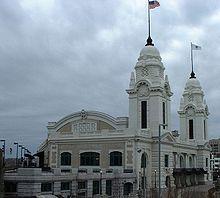
Worcester is the headquarters of the Providence and Worcester, a Class II railroad operating throughout much of southern New England. Worcester is also the western terminus of the Framingham/Worcester commuter rail line run by the Massachusetts Bay Transportation Authority. Union Station serves as the hub for commuter railway traffic. Built in 1911, the station has been restored to its original grace and splendor, reopening to full operation in 2000. It also serves as an Amtrak stop, serving the Lake Shore Limited from Boston to Chicago. In October 2008 the MBTA added 5 new trains to the Framingham/Worcester line as part of a plan to add 20 or more trains from Worcester to Boston and also to buy the track from CSX Transportation. Train passengers may also connect to additional services such as the Vermonter line in Springfield.
The Worcester Regional Transit Authority, or WRTA, manages the municipal bus system. Buses operate intracity as well as connect Worcester to surrounding central Massachusetts communities. The WRTA also operates a shuttle bus between member institutions of the Colleges of Worcester Consortium. Worcester is also served by Peter Pan Bus Lines and Greyhound Bus Lines, which operate out of Union Station.
The Worcester Regional Airport, owned and operated by Massport lies at the top of Tatnuck Hill, Worcester's highest. The airport consists of one 7,000 ft (2,100 m) runway and a $15.7 million dollar terminal built to attract airlines and passengers. The airport held numerous airlines from the 1950s through the 1990s, but it has encountered years of spotty commercial flights and disloyal air carriers. On September 4, 2008, Direct Air announced it would begin serving Worcester to Orlando, Florida, Myrtle Beach, South Carolina, and Punta Gorda, Florida, in the spring of 2009. Currently, this is the only commercial airline servicing the city. On Tuesday March 13, 2012, Direct Air canceled its entire charter program (including service to Worcester) due to financial reasons, leaving the passenger terminal at Worcester Regional Airport empty once again.
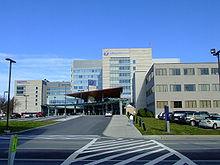
The Worcester State Insane Asylum Hospital (1833) was the first hospital in the United States established to treat mental illnesses.
Worcester is home to the University of Massachusetts Medical School, ranked fourth in primary care education among America aos 125 medical schools in the 2006 U.S. News & World Report annual guide "America aos Best Graduate Schools." The school also operates the UMass Memorial Health Care, the clinical arm of the teaching hospital, which has expanded its locations all over central Massachusetts. St. Vincent Hospital at Worcester Medical Center in the downtown area rounds out Worcester's primary care facilities. Fallon Clinic, presently the largest private multi-specialty group in central Massachusetts, includes St. Vincent's Hospital in its over 30 locations. Fallon Clinic was the creator of Fallon Community Health Plan, a now independent HMO based in Worcester, and one of the largest health maintenance organizations (HMOs) in the state.
Worcester has a municipally owned water supply. Sewage disposal services are provided by the Upper Blackstone Water Pollution Abatement District, which services Worcester as well as some surrounding communities. National Grid USA is the exclusive distributor of electric power to the city, though due to deregulation, customers now have a choice of electric generation companies. Natural gas is distributed by NSTAR Gas; only commercial and industrial customers may choose an alternate natural gas supplier. Verizon, successor to New England Telephone, NYNEX, and Bell Atlantic, is the primary wired telephone service provider for the area. Phone service is also available from various national wireless companies. Cable television is available from Charter Communications, with Broadband Internet access also provided, while a variety of DSL providers and resellers are able to provide broadband Internet over Verizon-owned phone lines.
The Worcester Fire Department maintains ten fire stations throughout the city and operates an apparatus fleet of 13 engines, 7 ladders, one rescue, one dive water rescue, and one special operations unit out of two divisions, the North Division and the South Division. The Department is staffed by over 400 full-time firefighters and responds to over 30,000 emergency calls annually.
Worcester has the following sister cities:
^ a: The US Census estimated that Worcester surpassed Providence in 2006 by 199 people. Though this is well within the margin of error, List of United States cities by population uses the 2008 estimates for purposes of ranking. The New England article, however, ranks by 2000 Census, which places Providence as second largest. In the 2010 Census, Worcester's roughly 181,000 residents surpassed Providence's roughly 178,000.
Map of Massachusetts. USA. New England. Counties - Berkshire, Franklin, Hampshire and Hampden, Worcester, Middlesex, Essex and Norfolk, Boston - Suffolk,Plymouth, Bristol, Barnstable and Dukes (Cape Cod). Cities - Springfield, Worcester, Lowell, Lawrence, Haverhill, Newburyport, Salem, Lynn, Taunton, Fall River. New Bedford. These 1871 maps of the Counties and Cities are useful to see the roads and rail lines.
Word Count: 7083






